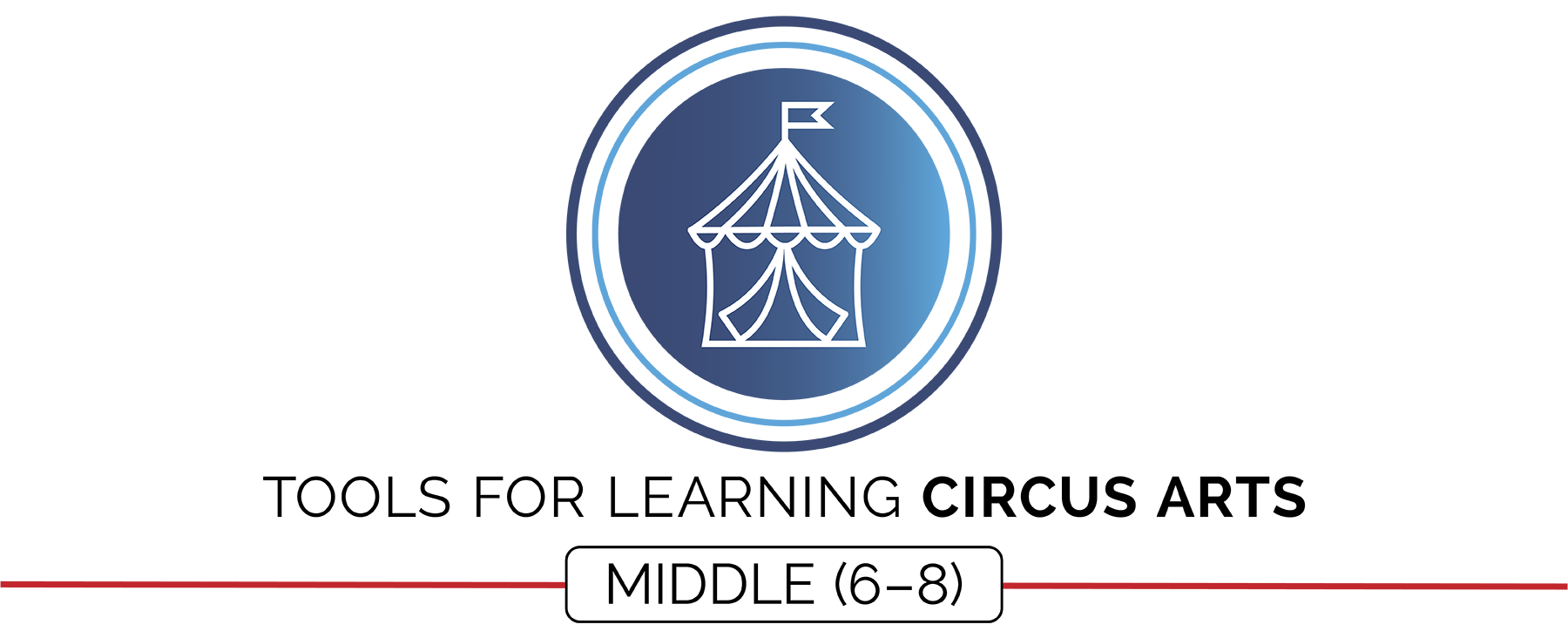Created by: Piper Cronin and Aaron Hart
Special Contributions: Deedi Boland
Design: Jennifer Truong
Since the existence of Ancient Rome, the circus has been associated with entertaining the population with acts of athletic ability. The modern circus is believed to have originated in England in the 1700s. Cavalry officer Philip Astley is said to have set up an amphitheater for crowds to gather and pay to be entertained by his tricks and stunts on horseback. Clowns, acrobats, and other entertainers were gradually added throughout the decades to follow.
While this instructional module won’t involve stunts on horseback, it will help to develop bilateral coordination, balance, and confidence. There are a variety of ways to utilize the resources provided. We offer a suggested format for planning your Circus Arts unit. However, feel free to modify this format to fit your schedule and the needs of your students.
Module Documents
Complete Module Packet:
Module Overview:
Required Materials:
All Module Activities:
Sample Lesson Plan:
Academic Language Cards:
Activity Cards (All Tricks):
Universal Design Adaptations:
Juggling Station Cards:
Newton's Laws Posters:
Circus Arts Station Cards:
Teacher Tips for Circus Skills:
Multimedia Guide:
Activity Plans
Basic Juggling:
Advanced Juggling:
Diabolo:
Flower Sticks:
Spinning Plates:
Balance Challenges:
Circus Practice:
Circus Combinations:
Circus Performance:
Assessments
Holistic Performance Rubric:
Academic Language Quiz:
Circus Routine Planning Card:
Circus Arts Show Line-Up Card:
Teacher Evaluation
Teacher Self-Evaluation and Reflection Guide:
Planning Tools
Blank Lesson Plan Template:
Can’t see the file links? Register for FREE today to access all of the modules. SIGN UP HERE
National Standards and Outcomes Focus for Circus Arts
Standard 1 [M25.6-8] Individual-Performance Activities
- Demonstrates correct technique for basic skills in one self-selected individual- performance activity (6);
- Demonstrates correct technique for a variety of skills in one self-selected individual-performance activity (7);
- Demonstrates correct technique for basic skills in at least two self-selected individual-performance activities (8).
Standard 2 [M12.6-8] Individual-Performance Activities, Movement Concepts
- Varies application of force during dance or gymnastic activities (6);
- Identifies and applies Newton’s laws of motion to various dance or movement activities (7);
- Describes/applies mechanical advantage for a variety of movement patterns (8).
Standard 3 [M18.6-8] Stress Management
- Identifies positive and negative results of stress and appropriate ways of dealing with each (6);
- Practices strategies for dealing with stress, such as deep breathing, guided visualization, and aerobic exercise (7);
- Demonstrates basic movements used in other stress-reducing activities such as yoga and Tai Chi (8).
Standard 4 [M3.6-8] Accepting Feedback
- Demonstrates self-responsibility by implementing specific corrective feedback to improve performance (6);
- Provides corrective feedback to a peer, using teacher-generated guidelines and incorporating appropriate tone and other communication skills (7);
- Provides encouragement & feedback to peers without prompting from teacher (8).
Standard 5 [M3.6-8] Challenge
- Recognizes individual challenges and copes in a positive way, such as extending effort, asking for help/feedback, and/or modifying the tasks (6);
- Generates positive strategies such as offering suggestions/assistance, leading/following others, and/or providing possible solutions when faced with a group challenge (7);
- Develops a plan of action and makes appropriate decisions based on that plan when faced with an individual challenge (8).

